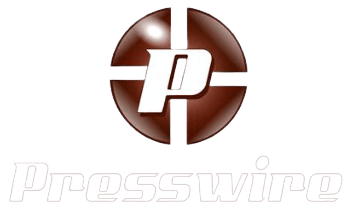In today’s digital age, generating buzz for your brand requires proactive efforts. With consumers relying less on traditional media outlets and more on social media for news, it’s crucial to take control of the narrative surrounding your brand. One powerful tool for creating and distributing newsworthy content is the press release. Consistently sharing meaningful news about your company can help you stand out and capture media attention over time. In this guide, we will provide step-by-step instructions detailing how to write a press release and insightful tips that will contribute to your publicity goals and enhance your brand’s visibility.
What Is a Press Release?
A press release is an official statement issued by an organization to the news media and beyond. It acts as a bridge between your company and journalists, providing them with essential information about a new product release, organizational changes, or other significant developments. Utilizing impactful language and including a compelling quote helps the press release capture attention and make it suitable for publishing.
Benefits of Press Releases
Besides generating media coverage, press releases offer several benefits that can immensely contribute to your brand’s success:
- Brand exposure: Sharing your company’s news, updates, and achievements through press releases creates brand awareness, attracting potential customers and increasing brand recognition.
- SEO benefits: Distributing press releases online can improve your search engine rankings, as they typically contain relevant keywords and links that enhance your website’s visibility in search results.
- Investor and stakeholder communication: Press releases are an excellent way to keep investors, shareholders, and other stakeholders informed about significant company announcements, financial results, or strategic initiatives.
- Crisis management: In challenging situations, a well-crafted press release can help you control the narrative, provide accurate information, and manage public perception.
Types of Press Releases
Press releases can be tailored to specific occasions and help you focus your message to fit the intended audience. Some common press release types include:
- New Product Launches
- Mergers and Acquisitions
- Product Updates
- Events
- Grand Openings
- New Partnerships
- Rebranding
- Executive Promotions/Hiring
- Awards
How To Craft a Compelling Headline
Your press release headline is the first impression you make on journalists and readers. To make it captivating, consider the following tips:
Use Action Verbs
Begin your headline with dynamic verbs that evoke a sense of urgency and add impact to immediately capture the attention of readers and journalists alike. By utilizing powerful and action-oriented language, you can create a stronger and more compelling impression.
Be Specific
When crafting your headline, make sure to clearly and precisely communicate the main point of your press release. By providing enough details upfront, you can pique the interest of your audience and ensure they understand the key takeaway or news you are presenting. A specific headline helps set expectations and generates curiosity.
Keep It Short
In a world where information overload is the norm, it’s essential to grab attention at a glance. Aim for a concise headline that conveys its message succinctly and effectively. By keeping it short and to the point, you increase the likelihood of your headline being read and remembered amidst the sea of competing news stories.
Make It Interesting
With countless news stories vying for attention, your headline needs to stand out from the crowd. Craft a headline that intrigues and entices readers to delve deeper into your press release. Consider using creative wording, unique angles, or compelling hooks to pique curiosity and make your headline irresistible. By making it interesting, you enhance the chances of your press release being read and shared by both media professionals and the general audience.
Structuring the Content
To ensure your press release is easy to digest and grabs the attention of journalists, structure it using the reverse pyramid formula:
- Start with the most important information: In the opening paragraph, answer the key questions of who, what, why, and where. Provide a concise summary of the news to capture interest immediately.
- Add context and details: In the following paragraphs, expand on the information provided in the opening, providing additional context and relevant details.
- Include quotes: Incorporate quotes from company spokespersons or executives to add credibility and a human touch to the press release.
- About Us section: Conclude the press release with a brief “About Us” section that explains your company’s background, mission, and offerings.
Incorporating Key Information
Make sure to include the following essential elements in your press release:
- Contact information: Provide clear and updated contact information for media inquiries.
- Release date: Include the phrase “For immediate release” to indicate that the news can be published right away.
- Boilerplate: Include a short paragraph about your company at the end of the press release. This provides additional context and background information.
- Signify the end of the release: Include a few pound symbols (###) at the end to indicate the completion of the press release, a tradition that is still respected in the industry.
Formatting for Media Attention
Formatting your press release in a news-oriented style makes it easier for journalists to envision it as an article. Consider the following formatting tips:
- Use a professional tone: Maintain a formal and informative tone throughout the press release.
- Include relevant subheadings: Break up the content using subheadings to facilitate scanning and highlight key information.
- Bulleted facts and figures: Use bullet points to present important facts, statistics, or key takeaways, making them easily readable.
- Keep it concise: Ideally, a press release should be one page long, or a maximum of two pages. Remember, journalists have limited time and want information that is succinct and to the point.
Tips for Publishing Press Releases
To maximize the impact of your press release, consider the following tips:
- Distribution: Utilize press release distribution services or reach out directly to targeted media outlets to increase the reach and visibility of your news.
- Follow up: Keep track of who received your press release and follow up with journalists to gauge interest and offer additional information.
- Leverage multimedia: Include relevant visuals, such as images or videos, to enhance the appeal and shareability of your press release.
- Monitor and analyze: Use analytics tools to track the performance of your press release, such as the number of views, click-through rates, and media coverage, to evaluate its success and make improvements for future releases.
The Art of Writing an Effective Press Release
Mastering the art of writing an effective press release is crucial for any business looking to generate media attention and boost brand visibility. By following the step-by-step instructions and tips outlined in this guide on how to write a press release, you can craft compelling headlines, structure your content effectively, incorporate key information, and format your press release to capture media attention and achieve your desired publicity goals. Embrace the power of press releases, and watch as your brand’s story gains traction in the news media landscape.
Incorporating these strategies and techniques will help you create press releases that not only inform but also captivate media professionals and attract the attention your brand deserves.
Remember, knowing how to write a press release is just the icing on the cake. Effective press releases are a culmination of concise, purposeful writing, strategic press release formatting, and targeted distribution. When done right, they can be a powerful tool in your marketing and communications arsenal.
Choose Us
We are a leading PR services company founded in 2001. We specialize in providing comprehensive press release distribution, media contact database, and media monitoring services to both private and public sector clients worldwide. Our solutions are trusted and utilized by leading firms in various industries such as finance, law, technology, marketing, educational institutions, and governments.
At Presswire, we understand the importance of reaching the right audience with your press releases. Our press release distribution platform offers highly effective targeting through our extensive global media contact database, ensuring that your news reaches the most relevant journalists and media outlets. With our online syndication and wire distribution services, we maximize the exposure and impact of your press releases.
In addition to press release distribution, our PR suite and media services provide innovative solutions for media contact sourcing and management, and media monitoring. We offer add-ons such as translation services, geo-targeting options, and comprehensive media monitoring tools, allowing you to track and analyze the pickup of your press releases worldwide.
Discover how Presswire can enhance your public relations and communications strategies by visiting our website and exploring our services:
Press release distribution: Reach your target audience effectively with our global media contact database, online syndication, and wire distribution services.
Media contact database: Access our extensive media contact database to connect with journalists and influencers who matter most to your business.
Online syndication: Amplify the reach of your press releases through our online syndication channels, ensuring broad visibility and increased brand exposure.
Choose Presswire as your trusted partner in achieving noteworthy press coverage and maximizing the impact of your news. Contact us today to learn more about our customized PR solutions and how we can support your communication objectives.



